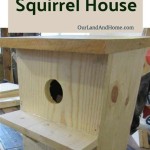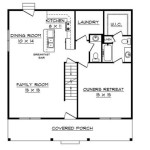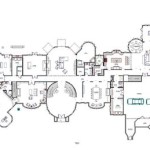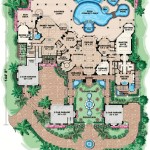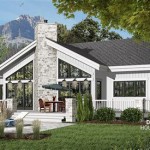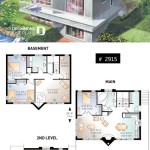Simple Bird House Plans are step-by-step instructions that guide individuals in building birdhouses for providing nesting spots for feathered friends. These plans typically include detailed measurements, materials list, and assembly instructions, making them accessible for crafters of all skill levels.
Whether you’re an experienced woodworker or a novice enthusiast, simple bird house plans offer a practical and rewarding project. By following the outlined steps, you can create a cozy and functional home for birds, observing their nesting and feeding habits up close.
Let’s delve into the core principles of simple bird house plans and explore the fundamental elements that make them an ideal way to connect with nature and support local bird populations.
To create successful nesting spots for birds, consider these 9 important points when using simple bird house plans:
- Choose appropriate wood species
- Determine correct dimensions
- Provide proper ventilation
- Create a suitable entrance hole
- Add drainage holes
- Install a perch or landing area
- Consider predator guards
- Provide for easy cleaning
- Respect local bird species
By attending to these key elements, you can build birdhouses that are both attractive and functional, providing a safe and comfortable haven for your feathered friends.
Choose appropriate wood species
The choice of wood species for your birdhouse is crucial as it impacts the durability, longevity, and overall success of your project. Selecting the right wood ensures your birdhouse can withstand the elements, providing a safe and comfortable nesting spot for its feathered occupants.
- Cedar
Cedar is a popular choice for birdhouses due to its natural resistance to rot, decay, and insects. Its aromatic properties also act as a deterrent to pests. Additionally, cedar is lightweight and easy to work with, making it a suitable option for both beginners and experienced builders.
- Redwood
Redwood is another excellent option for birdhouses, offering similar properties to cedar. It is naturally resistant to rot, decay, and insects, ensuring the longevity of your birdhouse. Redwood is also durable and can withstand harsh weather conditions.
- Cypress
Cypress is a highly durable wood that is resistant to rot, decay, and insects. It is also known for its resistance to warping and shrinking, making it a stable choice for birdhouses. Cypress is slightly harder than cedar and redwood, but it is still relatively easy to work with.
- Pine
Pine is a budget-friendly option for birdhouses, but it is not as durable as cedar, redwood, or cypress. Pine is susceptible to rot and decay, especially if it is not properly treated. However, if you are looking for an inexpensive option and are willing to take steps to protect the wood, pine can be a suitable choice.
When selecting wood for your birdhouse, consider the climate in your area and the amount of exposure the birdhouse will receive to the elements. Choosing a durable and weather-resistant wood species will ensure your birdhouse provides a safe and comfortable home for its avian inhabitants for many years to come.
Determine correct dimensions
The internal dimensions of a birdhouse are crucial for accommodating nesting birds comfortably while ensuring proper ventilation. Different bird species have varying size preferences, so it’s essential to research the specific requirements of the birds you aim to attract. Here’s a general guide to appropriate dimensions for birdhouses:
Height: The height of the birdhouse should be between 6 to 8 inches (15 to 20 centimeters). This provides enough vertical space for the birds to move around and build their nests.
Width and Depth: The width and depth of the birdhouse should be around 4 to 6 inches (10 to 15 centimeters). This provides sufficient space for the birds to incubate their eggs and raise their young.
Entrance Hole: The size of the entrance hole should be specific to the bird species you wish to attract. For smaller birds like chickadees and wrens, an entrance hole of 1 1/8 inches (2.8 centimeters) in diameter is suitable. For larger birds such as bluebirds and swallows, an entrance hole of 1 1/2 inches (3.8 centimeters) in diameter is more appropriate.
By carefully considering the correct dimensions for the birdhouse, you create an inviting and comfortable nesting environment that meets the specific needs of your target bird species.
Provide proper ventilation
Proper ventilation is crucial for the health and well-being of nesting birds. Inadequate ventilation can lead to a build-up of moisture, which can create a breeding ground for mold and bacteria. It can also cause the temperature inside the birdhouse to rise to dangerous levels, especially during hot weather.
To ensure proper ventilation, incorporate ventilation holes into the design of your birdhouse. These holes should be small enough to prevent nestlings from escaping but large enough to allow for adequate airflow. A good rule of thumb is to drill several 1/2-inch (1.25-centimeter) holes near the top of the birdhouse, on opposite sides.
In addition to ventilation holes, you can also provide ventilation by leaving a small gap between the roof and the walls of the birdhouse. This gap will allow air to circulate and help to prevent moisture build-up.
By providing proper ventilation, you create a healthy and comfortable environment for nesting birds. This will increase their chances of successfully raising their young and will help to ensure the long-term success of your birdhouse.
In addition to the points discussed above, here are a few additional tips for ensuring proper ventilation in your birdhouse:
- Avoid using solid materials, such as metal or plastic, for the walls of the birdhouse. These materials do not allow for air circulation.
- If you are using a wooden birdhouse, make sure that the wood is properly sealed to prevent moisture from seeping in.
- Place the birdhouse in a well-ventilated area, such as on a pole or in a tree.
Create a suitable entrance hole
The entrance hole is one of the most important features of a birdhouse. It provides access to the nest and helps to protect the eggs and chicks from predators. When designing the entrance hole, there are several factors to consider:
Size: The size of the entrance hole should be specific to the bird species you wish to attract. For smaller birds, such as chickadees and wrens, an entrance hole of 1 1/8 inches (2.8 centimeters) in diameter is suitable. For larger birds, such as bluebirds and swallows, an entrance hole of 1 1/2 inches (3.8 centimeters) in diameter is more appropriate.
Shape: The entrance hole should be round or oval in shape. Avoid creating an entrance hole that is square or rectangular, as this can make it easier for predators to enter the nest.
Location: The entrance hole should be placed near the top of the birdhouse, but not too close to the roof. This will help to prevent predators from reaching the nest and will also provide some protection from the elements.
Perch: A small perch can be placed just below the entrance hole to provide a place for birds to land before entering the nest. This is especially helpful for smaller birds, which may have difficulty landing on a narrow ledge.
By carefully considering the size, shape, location, and perch of the entrance hole, you can create a birdhouse that is both inviting and safe for nesting birds.
Add drainage holes
Drainage holes are essential for preventing water from accumulating inside the birdhouse. Water can damage the nest and eggs, and it can also create a breeding ground for mold and bacteria. To prevent these problems, drill several small holes in the bottom of the birdhouse, near the back. The holes should be large enough to allow water to drain out, but small enough to prevent nestlings from escaping.
In addition to drainage holes in the bottom of the birdhouse, you can also add ventilation holes near the top. Ventilation holes will help to circulate air and prevent moisture from building up inside the birdhouse. To create ventilation holes, drill several small holes near the top of the birdhouse, on opposite sides.
By adding drainage and ventilation holes to your birdhouse, you can help to ensure that the nest remains dry and well-ventilated. This will increase the chances of successful nesting and will help to keep the baby birds healthy.
Here are some additional tips for adding drainage holes to your birdhouse:
- Make sure that the drainage holes are large enough to allow water to drain out easily. However, they should not be so large that nestlings can escape.
- Place the drainage holes near the back of the birdhouse, so that water will drain away from the nest.
- If you are using a wooden birdhouse, make sure that the wood is properly sealed to prevent moisture from seeping in.
By following these tips, you can create a birdhouse that is both functional and attractive. Your feathered friends will thank you for providing them with a safe and comfortable place to nest.
Install a perch or landing area
A perch or landing area provides a place for birds to land before entering the nest. This is especially helpful for smaller birds, which may have difficulty landing on a narrow ledge. A perch should be placed just below the entrance hole and should be made of a rough material, such as wood or bark, that provides good grip for the birds’ feet.
- Provides a resting spot: The perch gives birds a place to rest and survey their surroundings before entering the nest. This is especially important for small birds that may be vulnerable to predators.
- Facilitates nest building: The perch provides a convenient spot for birds to bring nesting materials into the nest. They can use the perch to hold the materials in place while they build their nest.
- Prevents overcrowding: If there is no perch, multiple birds may try to enter the nest at the same time, which can lead to overcrowding and competition for space.
- Enhances the aesthetic appeal: A well-placed perch can add a touch of visual interest to your birdhouse and make it more attractive to birds.
By installing a perch or landing area on your birdhouse, you can make it more inviting and functional for nesting birds. This will increase the chances of successful nesting and will help to keep the baby birds safe.
Consider predator guards
Protecting nesting birds from predators is crucial for the success of any birdhouse. Predators such as snakes, cats, and squirrels can easily access birdhouses and prey on eggs and nestlings. To safeguard your feathered friends, consider incorporating predator guards into your birdhouse design.
Types of predator guards: There are various types of predator guards available, each with its advantages and disadvantages. Here are some common options:
- Baffles: Baffles are metal or plastic discs that are placed around the entrance hole of the birdhouse. They prevent predators from reaching the nest by creating a physical barrier.
- Predator guards: Predator guards are cone-shaped devices that are placed over the entrance hole of the birdhouse. They have a narrow opening that allows birds to enter and exit the nest but prevents predators from entering.
- Slippery poles: Slippery poles are metal or plastic poles that are coated with a slippery substance. They are placed beneath the birdhouse to prevent predators from climbing up and reaching the nest.
Choosing the right predator guard: The best type of predator guard for your birdhouse will depend on the specific predators that are present in your area. If you are unsure which type of predator guard to choose, consult with a local wildlife expert or ornithologist.
Installing predator guards: Once you have chosen a predator guard, follow the manufacturer’s instructions for installation. It is important to install the predator guard properly to ensure that it is effective in deterring predators.
In addition to predator guards, there are other steps you can take to protect nesting birds from predators. These include:
- Place the birdhouse in a secluded location: Avoid placing the birdhouse in an open area where it is easily accessible to predators.
- Choose a birdhouse with a small entrance hole: A small entrance hole will make it more difficult for predators to enter the nest.
- Monitor the birdhouse regularly: Keep an eye on the birdhouse for any signs of predators. If you see any predators near the birdhouse, take steps to deter them, such as making loud noises or spraying them with water.
By taking these precautions, you can help to ensure that your birdhouse is a safe haven for nesting birds.
Provide for easy cleaning
Regular cleaning of birdhouses is crucial for maintaining a healthy environment for nesting birds. Over time, birdhouses can accumulate nesting materials, droppings, and other debris, which can create a breeding ground for parasites and diseases. Regular cleaning helps to remove these contaminants and keep the birdhouse clean and hygienic for its occupants.
The frequency of cleaning will depend on the type of birdhouse and the number of birds using it. In general, birdhouses should be cleaned at least once a year, preferably before the nesting season begins. If the birdhouse is being used by multiple broods of birds, more frequent cleaning may be necessary.
To clean a birdhouse, remove all nesting materials and debris. Use a mild soap solution to wash the inside and outside of the birdhouse, and rinse thoroughly with water. Allow the birdhouse to dry completely before placing it back in its location.
Avoid using harsh chemicals or detergents to clean birdhouses, as these can leave behind harmful residues that can be harmful to birds. If there is a buildup of caked-on droppings or other stubborn debris, you can use a soft brush or cloth to gently remove it.
In addition to regular cleaning, there are a few other things you can do to make it easier to keep your birdhouse clean:
- Choose a birdhouse with a removable roof or bottom. This will make it easier to access the inside of the birdhouse for cleaning.
- Place the birdhouse in a location that is easy to reach for cleaning.
- Consider using a birdhouse cleaning brush. These brushes are specifically designed to clean birdhouses and can help to remove dirt and debris from hard-to-reach areas.
By providing for easy cleaning, you can help to ensure that your birdhouse is a safe and healthy environment for nesting birds.
Respect local bird species
When building birdhouses, it is important to consider the local bird species that you are hoping to attract. Different bird species have different nesting preferences, so it is important to choose a birdhouse design that is appropriate for the birds in your area.
One important factor to consider is the size of the birdhouse. The size of the birdhouse will determine which bird species are able to use it. For example, smaller birdhouses are suitable for smaller bird species, such as chickadees and wrens. Larger birdhouses are suitable for larger bird species, such as bluebirds and swallows.
Another important factor to consider is the shape of the birdhouse. The shape of the birdhouse will affect how easy it is for birds to enter and exit the nest. For example, birdhouses with a sloped roof are easier for birds to enter and exit than birdhouses with a flat roof.
Finally, it is important to consider the materials that you use to build the birdhouse. The materials that you use will affect the durability of the birdhouse and its ability to withstand the elements. For example, birdhouses made from cedar or redwood are more durable than birdhouses made from pine or fir.
By considering the local bird species, the size of the birdhouse, the shape of the birdhouse, and the materials that you use, you can build a birdhouse that is attractive to birds and that will provide them with a safe and comfortable place to nest.
In addition to the points discussed above, here are a few other things you can do to respect local bird species when building birdhouses:
- Avoid using treated lumber to build birdhouses. Treated lumber can contain chemicals that are harmful to birds.
- Place birdhouses in a location that is safe from predators. Avoid placing birdhouses near busy roads or in areas where there are a lot of cats or other predators.
- Monitor birdhouses regularly for signs of nesting activity. If you see signs of nesting activity, avoid disturbing the birds.
By following these tips, you can help to ensure that your birdhouses are a valuable resource for local bird species.










Related Posts


